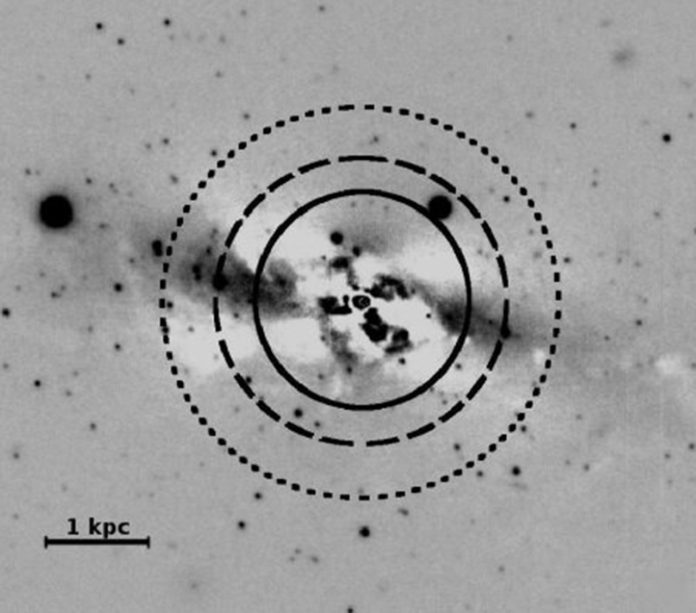In the last decades, the study of globular cluster (GC) systems has become an essential tool to obtain information about the formation history and evolution of early-type galaxies. Globular cluster systems associated with early-type galaxies located in different environments show bimodal color distributions to a greater or lesser extent.
Scientists focused on the photometric analysis of the Globular cluster system associated with the lenticular (S0) galaxy NGC 4546 to characterize and inquire about the evolutionary history of the system as a whole.
Located some 45.6 million light-years away, NGC 4546 is a nearly edge-on, lenticular (S0) galaxy with a stellar mass of about 27 billion solar masses.
To get a more detailed view of the GC system of NGC 4546, astronomers employed the GMOS camera on the Gemini-South telescope in Chile. They used the Gemini-South telescope to perform a photometric study of the lenticular galaxy NGC 4546.
Astronomers noted, “In this work, we present the analysis of the global properties of the GC system associated with the S0 galaxy NGC 4546, using Gemini/GMOS data of three fields in the g′r′i′z′ filters.”
Astronomers measured the photometry of 350 GC candidates in NGC 4546 by obtaining the integrated color distributions, density profiles, and azimuthal distributions. They found that the total population of GCs was estimated to be about 390, assuming that a maximum length of the GC system of this galaxy is 163,000 light-years. Furthermore, the specific frequency, defined as the total number of GCs per unit host galaxy luminosity, was found to be at a level of approximately 3.3.
Astronomers also detected extensive irregular regions of dust extending about 19,500 light-years along the semimajor axis of NGC 4546.
Astronomers noted, “This finding, together with the presence of a disk of gas rotating in the opposite direction to the stellar component of the galaxy, deliver interesting information about the history of NGC 4546. The astronomers suppose that such structures are indicative of a merger or interaction event in the recent past with an object of lower mass than NGC 4546.”
“We suggest that the unusual GC population substructures were possibly formed during the interaction that led to the formation of the young ultra-compact dwarf (NGC 4546-UCD1) found in this system.”
“This object, designated NGC 4546-UCD1, would have an age below four billion years and rotation direction similar to the gas distribution. However, they do not exclude the possibility of an interaction with a small companion lenticular galaxy, known as CGCG 014-074, which is located at a projected distance of approximately 71,700 light-years away from NGC 4546.”
The study is published in the arXiv.
